Jeep Compass vs Kia PV5 - Unterschiede & Preise im Vergleich
Vergleiche Leistung, Kofferraum, Verbrauch und Preis auf einen Blick.
Finde jetzt heraus, welches Auto für dich die bessere Wahl ist, Jeep Compass oder Kia PV5?
Der Jeep Compass (SUV) kommt mit einem Benzin MHEV, Plugin Hybrid oder Elektro-Motor und Automatik Getriebe. Im Vergleich dazu ist der Kia PV5 (Transporter oder Bus) mit einem Elektro-Motor und Automatik Getriebe ausgestattet.
Beim Kofferraumvolumen bietet der Jeep Compass 550 L und der Kia PV5 1320 L – je nachdem, wie viel Platz du brauchst. Wer mehr Leistung sucht, muss wählen ob die 240 PS des Jeep Compass oder die 163 PS des Kia PV5 für die eigenen Bedürfnisse genügen.
Beim Verbrauch liegen die Werte bei 17.50 kWh2 L pro 100 km für den Jeep Compass und 19.80 kWh für den Kia PV5.
Preislich startet der Jeep Compass ab 39900 €, während der Kia PV5 ab 38300 € erhältlich ist. Vergleiche alle Details und finde heraus, welches Modell besser zu deinem Leben passt!
Jeep Compass
Der Jeep Compass beeindruckt durch sein markantes Design und seine robusten Offroad-Eigenschaften, die ihn zu einem idealen Begleiter für Abenteuer abseits befestigter Straßen machen. Das Interieur bietet eine gelungene Kombination aus Komfort und moderner Technologie, die sowohl Fahrer als auch Passagiere bei jeder Fahrt begeistert. Mit seiner Vielseitigkeit und dem typischen Jeep-Charakter verspricht der Compass Fahrspaß sowohl in der Stadt als auch im Gelände.
Details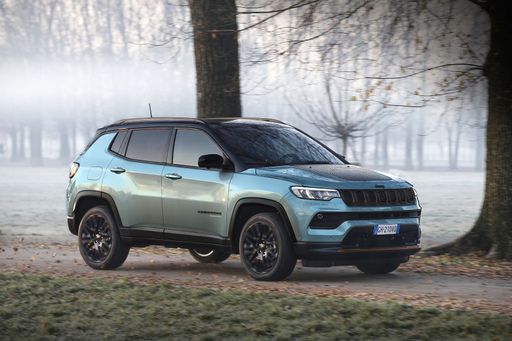 @ media.stellantis.com
@ media.stellantis.com
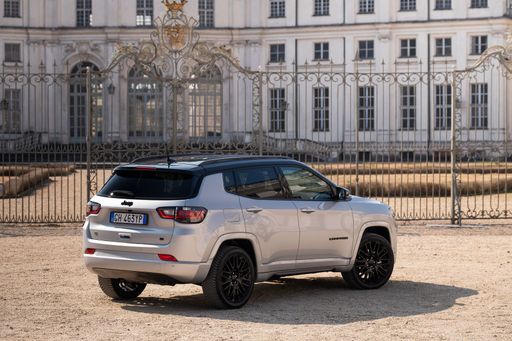 @ media.stellantis.com
@ media.stellantis.com
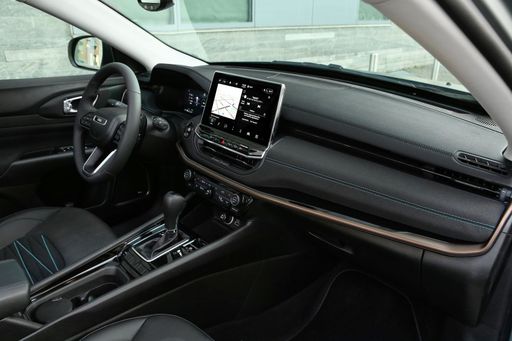 @ media.stellantis.com
@ media.stellantis.com
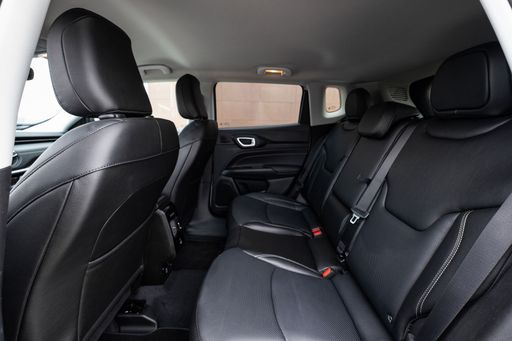 @ media.stellantis.com
@ media.stellantis.com
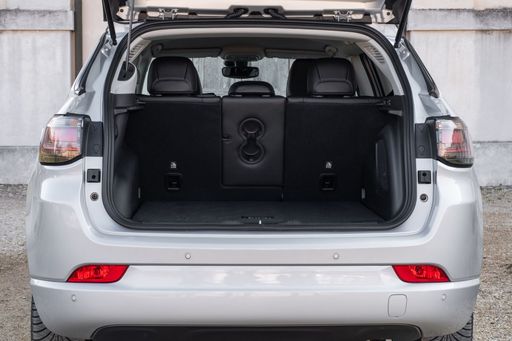 @ media.stellantis.com
@ media.stellantis.com
Kia PV5
The Kia EV5 is an exciting new entrant in the landscape of electric SUVs, promising a blend of style and innovation that captures attention. It boasts a sleek and modern design that aligns with Kia's evolving aesthetic identity, blending practicality with eye-catching details. With its foray into the electric vehicle segment, the EV5 is set to offer a highly competitive option for those looking to embrace sustainable mobility without compromising on comfort or tech features.
Details

|
|
|
|
|
Kosten und Verbrauch |
|
|---|---|
|
Preis
39900 - 54700 €
|
Preis
38300 - 45400 €
|
|
Verbrauch L/100km
2 - 5.9 L
|
Verbrauch L/100km
-
|
|
Verbrauch kWh/100km
17.50 kWh
|
Verbrauch kWh/100km
19.8 - 20.3 kWh
|
|
Elektrische Reichweite
36 - 500 km
|
Elektrische Reichweite
288 - 400 km
|
|
Batteriekapazität
74 kWh
|
Batteriekapazität
51.5 - 71.2 kWh
|
|
co2
0 - 133 g/km
|
co2
0 g/km
|
|
Tankgröße
36 - 55 L
|
Tankgröße
-
|
Maße und Karosserie |
|
|---|---|
|
Karosserie
SUV
|
Karosserie
Transporter, Bus
|
|
Sitze
5
|
Sitze
2 - 5
|
|
Türen
5
|
Türen
4 - 5
|
|
Leergewicht
1575 - 2198 kg
|
Leergewicht
1860 - 2145 kg
|
|
Kofferraum
420 - 550 L
|
Kofferraum
1320 L
|
|
Länge
4404 - 4552 mm
|
Länge
4695 mm
|
|
Breite
1819 mm
|
Breite
1850 - 1895 mm
|
|
Höhe
1629 - 1675 mm
|
Höhe
1923 mm
|
|
Zuladung
465 - 470 kg
|
Zuladung
505 - 790 kg
|
Motor und Leistung |
|
|---|---|
|
Motorart
Benzin MHEV, Plugin Hybrid, Elektro
|
Motorart
Elektro
|
|
Getriebe
Automatik
|
Getriebe
Automatik
|
|
Getriebe Detail
Automat. Schaltgetriebe (Doppelkupplung), Automatikgetriebe, Reduktionsgetriebe
|
Getriebe Detail
Reduktionsgetriebe
|
|
Antriebsart
Frontantrieb, Allrad
|
Antriebsart
Frontantrieb
|
|
Leistung PS
130 - 240 PS
|
Leistung PS
121 - 163 PS
|
|
Beschleunigung 0-100km/h
7.3 - 10.3 s
|
Beschleunigung 0-100km/h
10.7 - 16.3 s
|
|
max. Geschwindigkeit
180 - 200 km/h
|
max. Geschwindigkeit
135 km/h
|
|
Drehmoment
230 - 345 Nm
|
Drehmoment
250 Nm
|
|
Anzahl Zylinder
4
|
Anzahl Zylinder
-
|
|
Leistung kW
96 - 177 kW
|
Leistung kW
89 - 120 kW
|
|
Hubraum
1199 - 1469 cm3
|
Hubraum
-
|
Allgemein |
|
|---|---|
|
Modelljahr
2024 - 2025
|
Modelljahr
2025
|
|
CO2-Effizienzklasse
D, B, A
|
CO2-Effizienzklasse
A
|
|
Marke
Jeep
|
Marke
Kia
|
Jeep Compass
Der Jeep Compass: Ein moderner Klassiker im SUV-Segment
Der Jeep Compass hat sich über die Jahre als echtes Multitalent etabliert, das die Herzen von Offroad-Enthusiasten und Stadtfahrern gleichermaßen erobert hat. Im Modelljahr 2024 überzeugt der Compass durch eine Kombination aus technischer Innovation und bewährter Jeep-Robustheit.
Motorisierung und Antrieb: Vielfalt für jede Anforderung
Jeep setzt beim Compass auf eine breite Palette von Antriebsoptionen. Der Compass ist sowohl mit einem Benzin-Mild-Hybrid als auch als Plug-In-Hybrid erhältlich. Die Leistungsspanne reicht dabei von 130 bis 240 PS, was dem Fahrer ein hohes Maß an Flexibilität bietet. Die Mild-Hybrid-Variante bietet einen sparsamen Verbrauch von 5,5 L/100 km, während die Plug-In-Hybrid-Varianten besonders emissionsarm sind und eine elektrische Reichweite zwischen 50 und 53 km liefern.
Effizienz und Fahrleistung: Starke Performance mit geringem Verbrauch
Besonders hervorzuheben ist die CO2-Effizienzklasse, die bei den Hybridmodellen zwischen B und D liegt. Dies zeigt, dass Jeep großen Wert auf Umweltfreundlichkeit ohne Kompromisse bei der Leistung legt. Mit Beschleunigungswerten zwischen 7,3 und 10,3 Sekunden von 0 auf 100 km/h und Höchstgeschwindigkeiten von 184 bis 200 km/h bietet der Compass eine dynamische Fahrweise. Das optionale Allradsystem unterstreicht die Offroad-Tauglichkeit dieses SUVs.
Fortschrittliche Technik und Komfort
Der Innenraum des Jeep Compass präsentiert sich modern und technisch auf dem neuesten Stand. Mit Platz für bis zu fünf Personen und einer serienmäßigen Ausstattungslinie, die verschiedene Varianten wie Altitude und Overland umfasst, wird Komfort großgeschrieben. Das Fahrzeug bietet zudem einen großzügigen Kofferraum mit einem Volumen zwischen 420 und 438 Litern, je nach Konfiguration.
Preis-Leistungs-Verhältnis: Eine lohnende Investition
Die Preisgestaltung des Jeep Compass bewegt sich zwischen 39.600 und 54.400 Euro. Bei den Betriebskosten rechnet man mit monatlichen Kosten von circa 1.095 bis 1.315 Euro. Diese Werte machen den Compass nicht nur zu einem idealen Begleiter im Alltag, sondern auch zu einer wirtschaftlich vernünftigen Wahl.
Abschließende Gedanken: Ein SUV für jede Lebenslage
Der Jeep Compass 2024 stellt eine gelungene Balance aus Funktionalität, Effizienz und Fahrspaß dar. Egal, ob auf der Landstraße, in der Stadt oder im Gelände – dieser SUV ist immer eine gute Wahl und bleibt seiner DNA als extrem vielseitiges Fahrzeug treu.
Kia PV5
A Fresh Perspective on Cargo Vans: The Kia PV5
The Kia PV5 stands as a beacon of innovation in the realm of electric cargo vans. Known for its forward-thinking design and practicality, this model sets a new standard in its class. The PV5 combines cutting-edge technology with an eco-friendly design, redefining the expectations for businesses seeking sustainable transportation solutions.
Electric Power Meets Efficiency
At the heart of the Kia PV5 lies an advanced electric powertrain. The model is equipped with a 51.5 kWh battery, offering an impressive electric range of 291 km on a single charge. This robust power supply pairs with a front-wheel-drive system powered by an electric motor that delivers 121 HP (equivalent to 89 kW), keeping the operations both smooth and efficient.
Sustainability Without Compromise
The commitment to sustainability is evident in the PV5’s zero emissions, with a CO2 output of 0 g/km. The van maintains a CO2 Efficiency Class of A, clearly demonstrating Kia’s dedication to reducing the environmental impact of its vehicles. Businesses adopting the PV5 can confidently promote their green credentials while benefiting from the cost savings associated with electric driving.
Designed for Modern Business Needs
The Kia PV5 Cargo L2H1 Electric Automatic model is engineered for functionality and ease of use. Its spacious design accommodates two seats and offers a generous cargo area, making it perfect for diverse delivery needs. The van spans 4695 mm in length, 1850 mm in width, and 1923 mm in height, providing ample space to maneuver goods with ease.
Performance and Practicality
In terms of performance, the PV5 boasts a torque of 250 Nm and can accelerate from 0 to 100 km/h in 16.3 seconds. While its top speed is capped at 135 km/h, this is more than sufficient for urban and suburban delivery routes. The reduction gearbox ensures smooth transitions as it navigates through daily tasks.
Safety and Innovation
Safety is not compromised with the Kia PV5. It features a suite of safety technologies that support the driver in maintaining control and avoiding incidents. These innovations not only contribute to the safety of the driver and cargo but also offer peace of mind to businesses that prioritize the wellbeing of their workforce and goods.
The Road Ahead for Kia PV5
As the automotive industry continues to move towards electrification, the Kia PV5 exemplifies how cargo vans can adapt to this change seamlessly. It represents an essential step towards more sustainable business operations, providing a viable and efficient option for companies looking to reduce their carbon footprint while enhancing operational efficiency. The Kia PV5 is more than just a vehicle; it’s a strategic asset for any forward-thinking business.
Welche Antriebsmöglichkeiten bietet der Jeep Compass?
Angeboten wird der Jeep Compass mit Frontantrieb oder Allrad.
Die angezeigten Preise und Daten sind Schätzungen, die auf deutschen Listenpreisen basieren, und können je nach Land variieren. Diese Informationen sind rechtlich nicht bindend.
